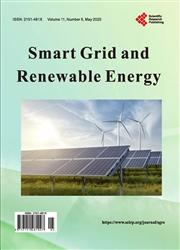Adaptive Active Islanding Detection Strategy Enhanced with Fault Ride-Through Capability for Grid-Tied Inverters
引用次数: 1
Abstract
The performance requirements of Grid-Tied Inverters (GTI) are regularly updated as the penetration of Distributed Generation (DG) increases. In view of improved reliability, the GTIs are required to add on the feature of low or high voltage ride-through (VRT). However, few studies are available to assess the impact of VRT methods on the existing control of the GTI, especially in terms of the implementation of islanding detection (ID). It is observed that the requirements for low VRT and ID are contradictory i.e., for certain low voltage levels, while low VRT assumes fault in the grid and demands continued operation, ID assumes the system to be islanded and tries to trip or initiate transfer to intentional islanded operation. Hence, it is important that the ID method differentiates between events corresponding to fault in the grid that demands VRT and actual islanding. In this paper, a previously proposed method of ID that makes use of the constancy of a voltage to current ratio in response to a pattern of step changes in active power reference, is adapted to operate with low VRT successfully. It is shown that the method can effectively differentiate between a fault condition that demands VRT and an islanding phenomenon. Also, a method for balanced current injection even during unbalanced operation with current limiting action is devised and implemented. The method is validated through MATLAB/Simulink simulation and the results thereof are presented.并网逆变器故障穿越能力增强的自适应主动孤岛检测策略
随着分布式发电(DG)的普及,并网逆变器(GTI)的性能要求也在不断更新。为了提高可靠性,gti需要增加低电压或高电压穿越(VRT)功能。然而,很少有研究评估VRT方法对现有GTI控制的影响,特别是在孤岛检测(ID)的实施方面。可以看出,对低VRT和ID的要求是矛盾的,即在一定的低电压水平下,低VRT假设电网出现故障,要求继续运行,而ID假设系统处于孤岛状态,试图跳闸或启动向有意孤岛运行的过渡。因此,ID方法区分需要VRT的网格故障对应的事件和实际孤岛是很重要的。在本文中,先前提出的一种ID方法利用电压电流比的恒定性来响应有功功率基准的阶跃变化模式,成功地适应了低VRT的工作。结果表明,该方法能有效区分需要VRT的故障状态和孤岛现象。此外,还设计并实现了一种在具有限流作用的不平衡运行过程中也能注入平衡电流的方法。通过MATLAB/Simulink仿真对该方法进行了验证,并给出了仿真结果。
本文章由计算机程序翻译,如有差异,请以英文原文为准。
求助全文
约1分钟内获得全文
求助全文

 求助内容:
求助内容: 应助结果提醒方式:
应助结果提醒方式:


